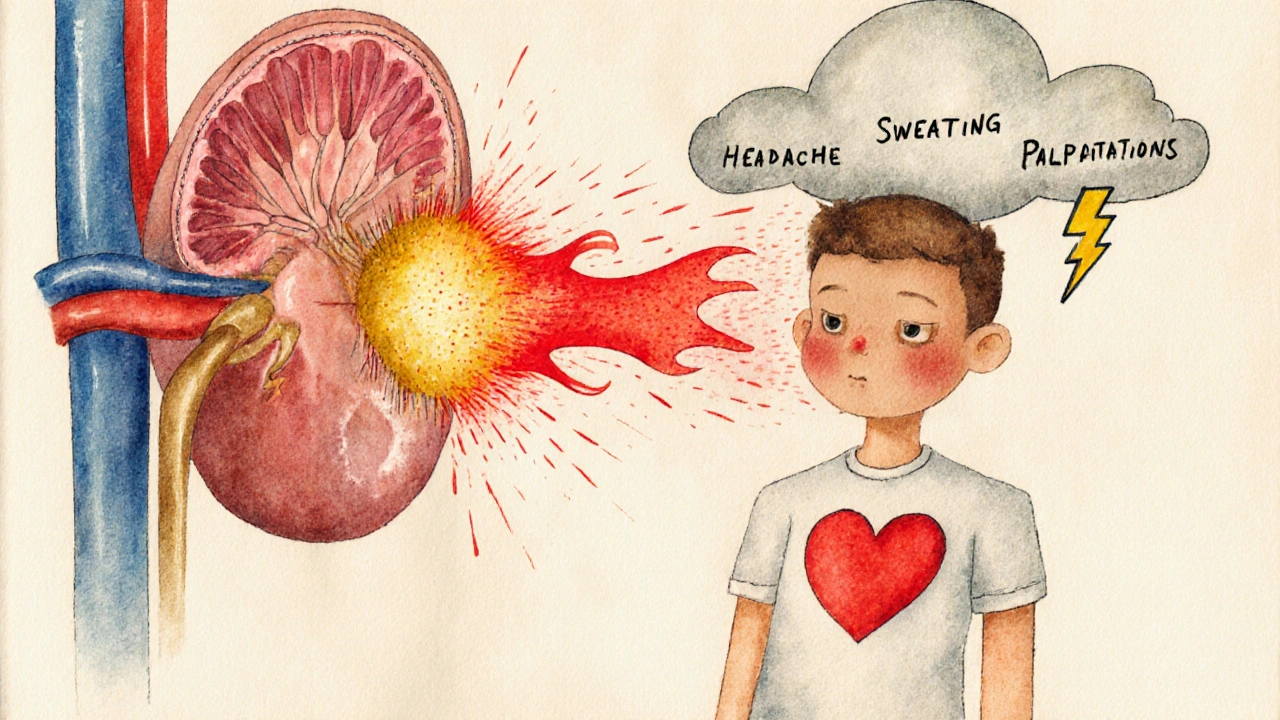Catecholamine Tumor: What It Is, How It’s Diagnosed, and What You Need to Know
When your body releases too much catecholamine tumor, a rare growth that produces excess adrenaline and noradrenaline. Also known as pheochromocytoma, it usually starts in the adrenal glands and can trigger sudden, life-threatening spikes in blood pressure. These tumors don’t always cause symptoms—until they do, and when they do, it’s often with a pounding heart, sweating so heavy it soaks your clothes, and headaches that feel like your skull is cracking.
Not all catecholamine tumors are the same. Some grow in the adrenal glands, called pheochromocytoma, a tumor that overproduces adrenaline and noradrenaline. Others form outside the adrenal glands, along nerve chains in the abdomen or chest—these are paraganglioma, a related tumor type that also releases stress hormones. Both can be benign, but even non-cancerous ones can be deadly if they cause uncontrolled high blood pressure during surgery, exercise, or stress. The key is catching them before they trigger a crisis.
Doctors look for patterns: episodes of sweating, racing heart, and high blood pressure that come and go without clear cause. Blood or urine tests check for excess adrenaline, noradrenaline, or their breakdown products. Imaging like CT or MRI finds the tumor’s location. What makes these tumors tricky is that they’re rare—many doctors see only one or two in their career—so they’re often missed or misdiagnosed as anxiety, panic attacks, or even menopause.
Once found, removal is usually the cure. But preparation matters. Before surgery, patients need medication to block the effects of excess hormones—otherwise, the stress of cutting into the tumor can send blood pressure through the roof. Beta-blockers, alpha-blockers, and sometimes calcium channel blockers are used to stabilize the body. After surgery, most people return to normal, but follow-up is critical because these tumors can come back, especially if they’re linked to inherited syndromes like MEN2 or VHL.
You won’t find these tumors in every health article. But if you’ve had unexplained high blood pressure, panic-like attacks without triggers, or a family history of rare tumors, this is the kind of info that could save your life. Below, you’ll find real patient stories, lab test breakdowns, and treatment comparisons that help cut through the confusion. No fluff. Just what you need to understand, ask the right questions, and get the care you deserve.
Pheochromocytoma is a rare adrenal tumor that causes dangerous spikes in blood pressure through excess adrenaline. It’s often misdiagnosed as anxiety, but blood tests and surgery can cure it. Learn the symptoms, diagnosis, and why early detection saves lives.

